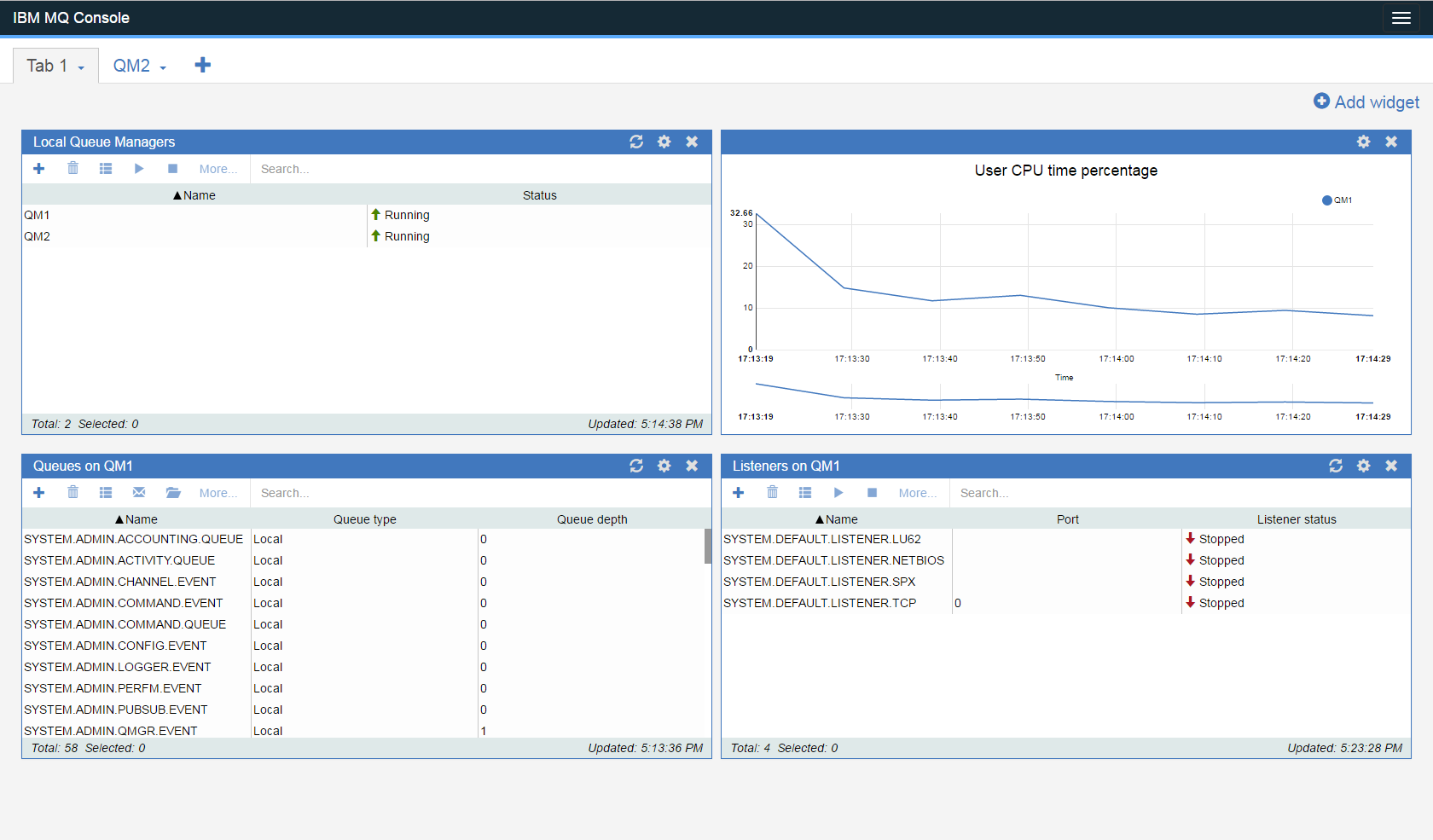IBM® MQ is messaging middleware that simplifies and accelerates the integration of diverse applications and business data across multiple platforms. It uses message queues to facilitate the exchanges of information and offers a single messaging solution for cloud, mobile, Internet of Things (IoT) and on-premises environments.
By connecting virtually everything from a simple pair of applications to the most complex business environments, IBM MQ helps you improve business responsiveness, control costs, reduce risk—and gain real-time insight from mobile, IoT and sensor data.
Maintained images
Tags and respective Dockerfile links for images which are actively maintained with security fixes, and use MQ versions which are in support:
9.1.2.0,latest(Dockerfile)
Unmaintained images
Tags and respective Dockerfile links for images which are no longer actively maintained with security fixes, or use MQ versions which are no longer in support. You are recommended to avoid use of these images, but they are left for compatibility reasons:
9.1.1.0(Dockerfile)9.1.0.0(Dockerfile)
All images are “Continuous Delivery” (CD) releases, and are available for download for up to one year (from 9.1.0.0 onwards), with new CD releases superseding older versions. If you want to use MQ V8.0.0 or V9.0.0, see this sample for how to build your own image.
Quick reference
License: IBM MQ Advanced for Developers and Apache License 2.0. Note: The IBM MQ Advanced for Developers license does not permit further distribution and the terms restrict usage to a developer machine.
Where to get help:: IBM MQ Knowledge Center, Image documentation
Where to file issues: GitHub
Maintained by: IBM
Supported architectures:
x86_64,ppc64le,s390x
Overview
Run IBM® MQ Advanced for Developers in a container.
Usage
See the usage documentation for details on how to run a container.
Note that in order to use the image, it is necessary to accept the terms of the IBM MQ license by setting the LICENSE environment variable.
Environment variables supported by this image
- LICENSE - Set this to
acceptto agree to the MQ Advanced for Developers license. If you wish to see the license you can set this toview. - LANG - Set this to the language you would like the license to be printed in.
- LOG_FORMAT - Set this to change the format of the logs which are printed on the container's stdout. Set to - "json" to use JSON format (JSON object per line); set to "basic" to use a simple human-readable format. Defaults to "basic".
- MQ_QMGR_NAME - Set this to the name you want your Queue Manager to be created with.
- MQ_ENABLE_METRICS - Set this to
trueto generate Prometheus metrics for your Queue Manager. - MQ_DEV - Set this to
falseto stop the default objects being created. - MQ_ADMIN_PASSWORD - Changes the password of the
adminuser. Must be at least 8 characters long. Default ispassw0rd. - MQ_APP_PASSWORD - Changes the password of the app user. If set, this will cause the
DEV.APP.SVRCONNchannel to become secured and only allow connections that supply a valid userid and password. Must be at least 8 characters long. Default is blank (no password required) for MQ clients, andpassw0rdfor HTTP clients. - MQ_TLS_KEYSTORE - Allows you to supply the location of a PKCS#12 keystore containing a single certificate which you want to use in both the web console and the queue manager. Requires
MQ_TLS_PASSPHRASE. When enabled the channels created will be secured using theTLS_RSA_WITH_AES_128_CBC_SHA256CipherSpec. Note: you will need to make the keystore available inside your container, this can be done by mounting a volume to your container. - MQ_TLS_PASSPHRASE - Passphrase for the keystore referenced in
MQ_TLS_KEYSTORE.
See the default developer configuration docs for more information about the default developer configuration supported by the MQ Advanced for Developers image.
Kubernetes
If you want to use IBM MQ in Kubernetes, you can find an example Helm chart here: IBM charts. This can be used to run the container on a cluster, such as IBM Cloud Private or the IBM Cloud Kubernetes Service.
Copyright
© Copyright IBM Corporation 2015, 2019



